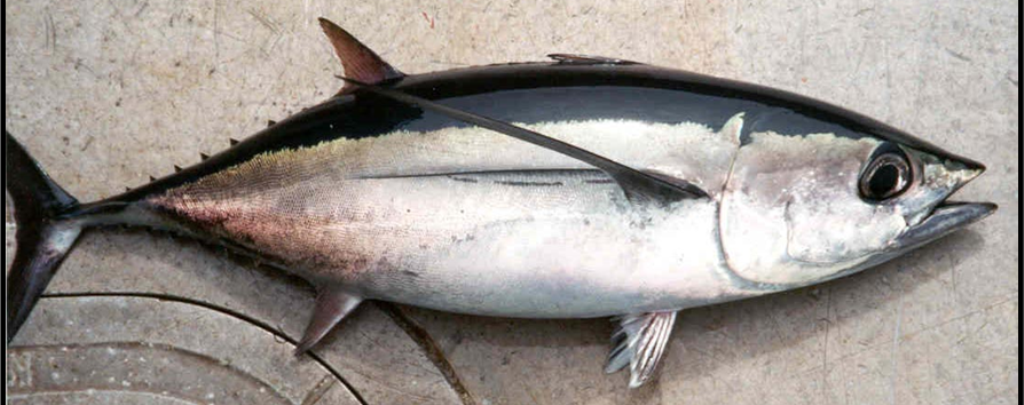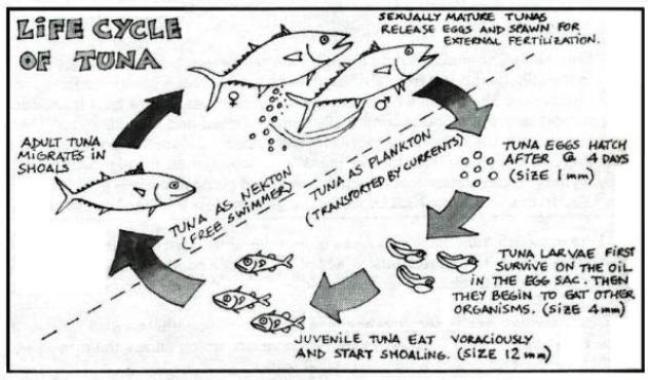Reproduction
The Albacore tuna has a very unique way of
reproduction. First, spawning must occur. Spawning is basically when the eggs or sperm are released into the aquatic
habitat for reproduction to occur. There are both female and
male tuna, so the Albacore tuna can be considered a dioecious
species.
 For
the Albacore tuna, spawning usually takes place from March to
July, but in some cases spawning can last as long as September.
The peak of the spawning period usually occurs in the first two
months, March and April. Also, other evidence has shown that
this species may spawn more than once a year. However, there is
limited information on this discovery. Albacore tuna are
believed to release their gametes near the surface of the water
and since the eggs and sperm are released outside of the tuna’s
body, fertilization is considered to be external. The female can
release a large amount of eggs, sometimes releasing 2.6 million
eggs per spawning. The eggs are enclosed by an oil droplet and
tend to develop extremely fast, with hatching occurring within 48 hours.
For
the Albacore tuna, spawning usually takes place from March to
July, but in some cases spawning can last as long as September.
The peak of the spawning period usually occurs in the first two
months, March and April. Also, other evidence has shown that
this species may spawn more than once a year. However, there is
limited information on this discovery. Albacore tuna are
believed to release their gametes near the surface of the water
and since the eggs and sperm are released outside of the tuna’s
body, fertilization is considered to be external. The female can
release a large amount of eggs, sometimes releasing 2.6 million
eggs per spawning. The eggs are enclosed by an oil droplet and
tend to develop extremely fast, with hatching occurring within 48 hours. Once the young Albacore are born, it is believed that they will
remain near the spawning areas within the first year of their
lives. However, the parents are no longer involved with their
lives. As one may
expect, not all of the eggs that the female Albacore produces
survive. Most will not make it to the adult stage. In addition,
since the parents stop taking care of the offspring right away, many of the
younger Albacore do not survive.
An Albacore does not reach sexual maturity until about
5-6 years of age. Most Albacore tuna that do reach maturity tend
to live to be about 11-12 years of age.
Once the young Albacore are born, it is believed that they will
remain near the spawning areas within the first year of their
lives. However, the parents are no longer involved with their
lives. As one may
expect, not all of the eggs that the female Albacore produces
survive. Most will not make it to the adult stage. In addition,
since the parents stop taking care of the offspring right away, many of the
younger Albacore do not survive.
An Albacore does not reach sexual maturity until about
5-6 years of age. Most Albacore tuna that do reach maturity tend
to live to be about 11-12 years of age.

